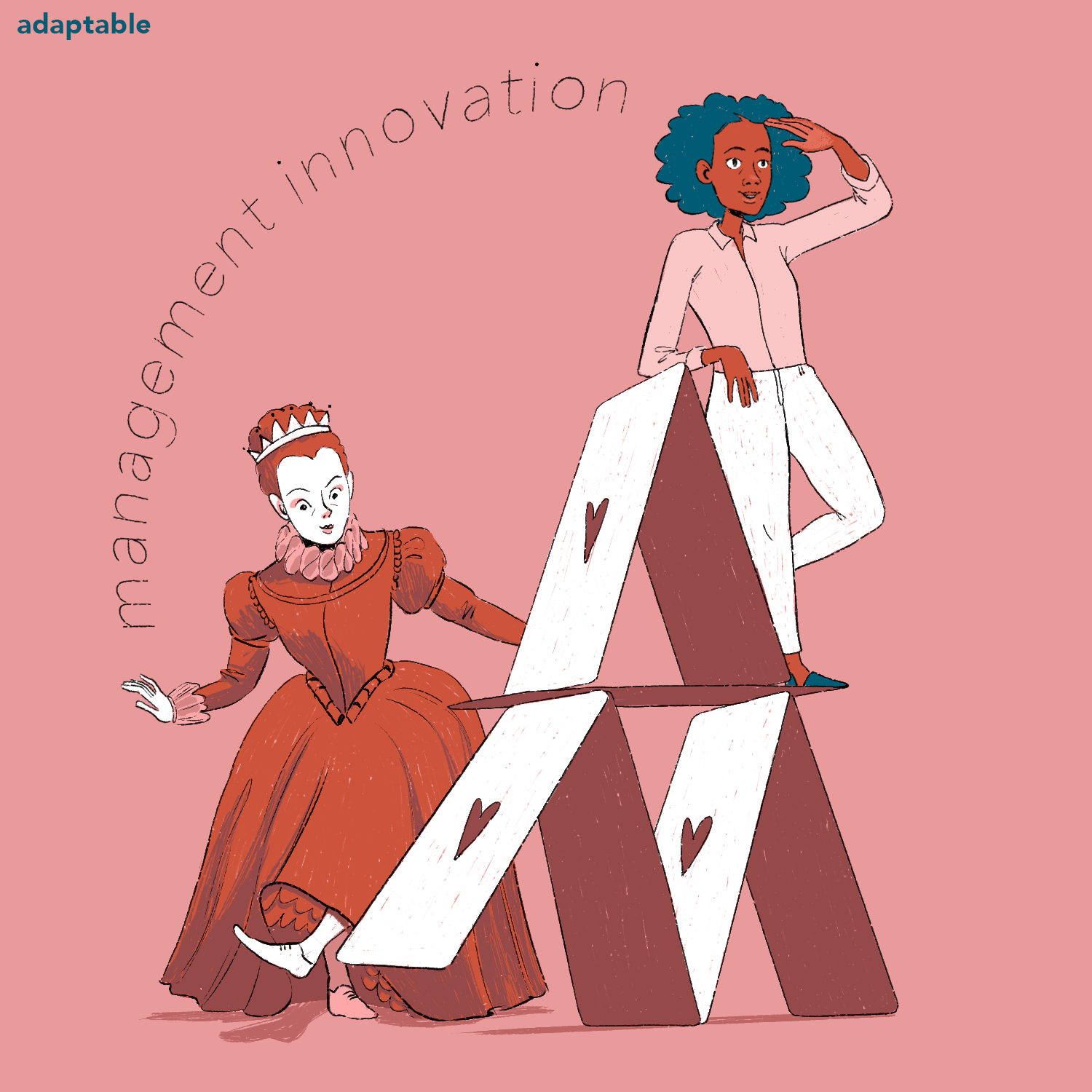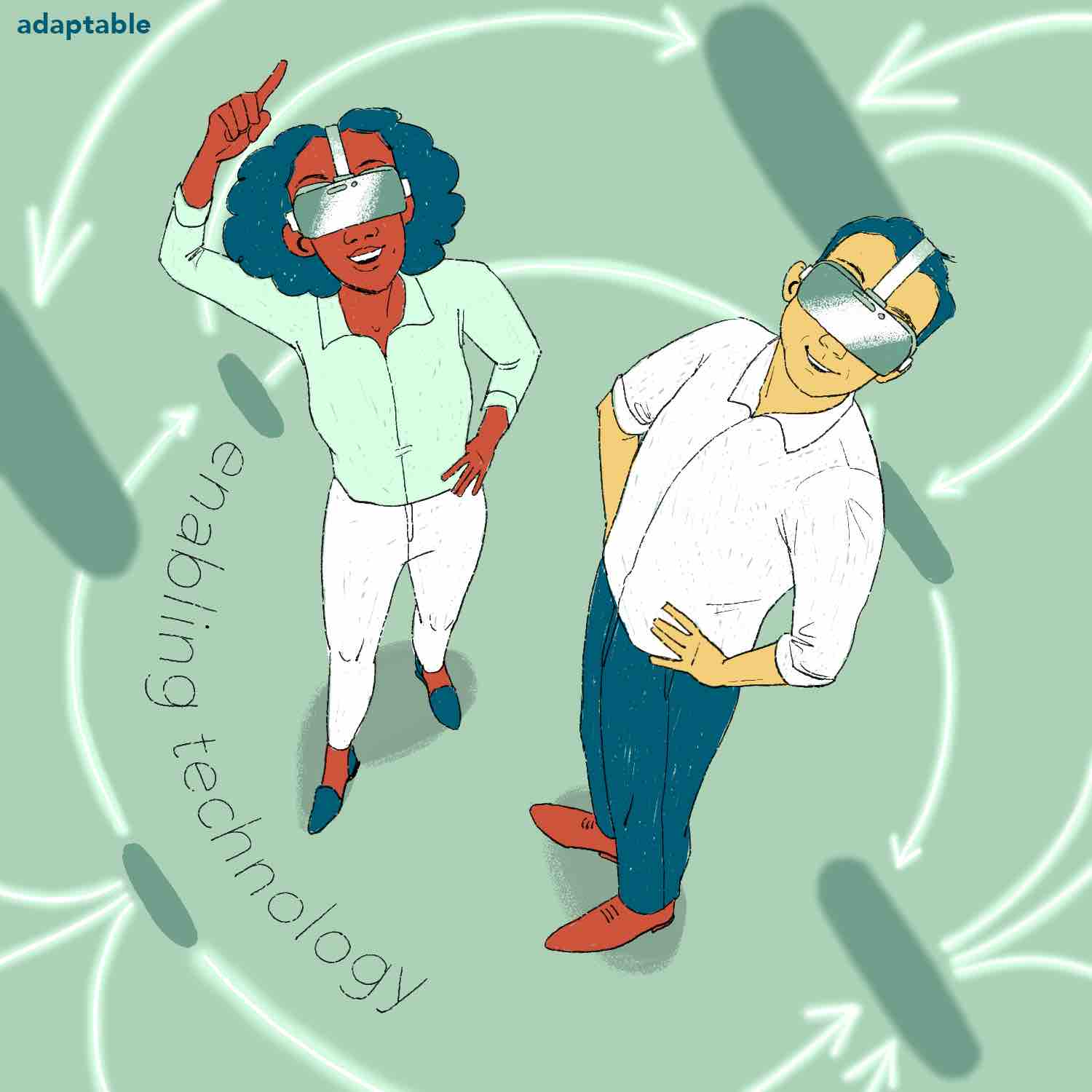Top Articles on Strategy Execution – February 2021
We read over 500 articles and found the best few for each capability of strategy execution. Our Editor’s Month-in-Review recounts the ~35 that we think you should know about. Our Top 10 List highlights the best of the lot!
As a quick reminder, here is a picture of the organizational capabilities related to strategy execution for which adaptable is collecting and curating content.

Top Ten List
| Rank | Title | Publisher | Category |
| 1 | Distinguishing How-to-Win from Capabilities in Your Strategy Choice | Roger Martin | Strategic Clarity |
| 2 | Palantir Live Demo Day (Video) | Palantir | Enabling Technology |
| 3 | Base Rates and Bees with Michael Mauboussin (Podcast) | The Decision Education Podcast | Management Innovation |
| 4 | The Future of Team Leadership Is Multimodal | MIT Sloan Management Review | Cultural Cohesion |
| 5 | Psychological safety and the critical role of leadership development | McKinsey & Company | Cultural Cohesion |
| 6 | Using VR To Step Inside Your Data: VR Or AR-Enabled Analytics | Forbes | Prepared Minds |
| 7 | How Delivering Outcomes Changes Everything | BCG | Strategic Clarity |
| 8 | Strategy vs. Planning: Complements not Substitutes | Roger Martin | Strategic Clarity |
| 9 | Make Time for Small Talk in Your Virtual Meetings | HBR.org | Cultural Cohesion |
| 10 | Not Everyone Can Be Agile | INSEAD Knowledge | Management Innovation |
Editor’s Month-in-Review
 Management Innovation
Management Innovation
Creating novel principles, processes, and practices that alter both the system and the way that organizations perform work
On the topic of management innovation, my favorite was a podcast (admittedly from January 27th) called Base Rates and Bees with Michael Mauboussin. A friend, Tim Brennan, recommended it to me. In the podcast, Dr. Joe Sweeney from the Alliance for Decision Education speaks with Michael Mauboussin, Head of Consilient Research at Counterpoint Global. I’ll highlight two key topics. The first is base rates which is defined as understanding the nature of the outcomes that happen from analogous events with similar initial circumstances. Mauboussin goes on to say, “Just understanding how things have unfolded for other people can be very helpful to understand how things might unfold for you or your object of interest.” The second idea covered is how to balance when to exploit current businesses versus explore new business ideas. With references to insect studies, Mauboussin points out that it depends on the level of uncertainty / rate of change in the surrounding environment. We are left to ponder whether one can derive a quantitative understanding of this phenomenon versus the current qualitative narrative that many of us embrace.
The next article by Yzes Doz and Maria Guadalupe is titled Not Everyone Can Be Agile. In this article, the authors reject the idea that agile is a panacea for all businesses. Instead, they suggest that it may be best suited for those businesses with modular components requiring short cycle innovations and cross-functional teams. I’m sure some may disagree, and we’ll probably hear from them next month. By the way, I remember reading an article by Yzes Doz 15 years ago, asking the question “How Agile is Your Strategy Process.” In this day and age of competing on dynamic capabilities, that article is worth re-reading!
Another article this month is Aspiring Business Partner: When Financial Planning and Analysis Needs an Overhaul. This article looks at the opportunity for FPA to become the valued business partners they deserve to be. The FPA team has the goal clarity, information, and access to resources to be trusted advisors to their operating colleagues. Maybe 2021 is finally the time! Next, A CEO guide to today’s value creation ecosystem takes a look at the intersection of business growth, ESG, and ecosystems. This is a growing topic of interest that deserves focused study by all of us, so kudos to this team for provoking the dialog. Lastly, in Redesigning the Post-Pandemic Workplace, it is suggested that now is the time to rediscover the workplace as well as to redefine the workforce and, possibly, work itself.
 Strategic Clarity
Strategic Clarity
Articulating long term priorities as well as current strategies throughout the company.
There were a lot of good articles on the topic of Strategic Clarity in February. Two posts, by strategist and academic Roger Martin, top my list: Strategy vs. Planning: Complements not Substitutes and Distinguishing How-to-Win from Capabilities in Your Strategy Choice. These short posts are some of the simplest yet most clear explanations of the difference between strategy and planning and of how distinct capabilities are the key to a company’s How-to-Win (or theory of competitive advantage). I’d bookmark these links and send them to your colleagues as needed.
How Delivering Outcomes Changes Everything suggests that we begin to focus on how we move beyond selling simple products and services and truly begin to focus on outcomes. For instance, the authors suggest that Rolls-Royce provide power by the hour as opposed to selling engines! The thought-provoking article directs us to combine services with digital measurement to gauge success. Another article, Why KPIs Don’t Work; And How To Fix Them, states that key performance indicators don’t work because they often do a poor job of tracking goals, and, beyond that, most goals are poorly articulated in the first place! The article urges companies to focus on external customer-facing measures instead of internal ones.
The next couple of articles come from McKinsey. The first, Transformation in uncertain times: Tackling both the urgent and the important, leverages the concept of “road-mapping”, which they define as leveraging successive sprints to first address urgent, low-hanging fruit in an effort to build legitimacy for successive, more important initiatives. The second article, How agile can power frontline excellence, walks through a series of design choices to enhance frontline salespeople’s ability and ownership to deliver a better customer experience.
How to create value in an evolving business environment walks through EY-Parthenon’s priority matrix and EY-Parthenon’s decision diamond. The former plots a firm’s performance against industry dynamics to gauge its current position of strength, and the latter plots the organization’s change agenda across four strategic levers: operating model, product portfolio, cost structure, and marketing footprint. Lastly, we have an article on Are You Doing the SWOT Analysis Backwards? which walks us through what the authors deem as the correct way to perform a SWOT analysis.
 Prepared Minds
Prepared Minds
Ensuring that information and context are provided to employees, so they are equipped to take initiative in their roles
My favorite read on Prepared Minds was Bernard Marr’s, Using VR To Step Inside Your Data: VR Or AR-Enabled Analytics. This article excites me. I want to experience an immersive analytics environment where I can “step inside the data” as claimed by BadVR.com. I can only imagine the learning and exploring that is possible when we can readily create virtual reality and/or augmented reality environments to pick apart and simulate operations in our businesses. Beware, in the Enabling Technology section (further below), we will see that the software is now readily available to create these simulated environments!
In Prediction: The future of CX, the authors bemuse the use of surveys for customer experience measurement and turn the question to readers, “Why use a survey to ask customers about their experiences when data about customer interactions can be used to predict satisfaction?” They then lay out the path to said predictive capability. Another article, The CFO Imperative: How can corporate reporting connect your business to its true value? challenges CFOs to make reporting a catalyst to driving long term value creation, and Why Is It So Hard to Become a Data-Driven Company? and Progress Toward the Intelligent Enterprise return to culture as the biggest barrier to digital transformation.
Lastly, the article Unlocking Value with Location Intelligence, takes a deep dive into how location data is now being leveraged by most businesses to create a customized user experience and to exploit operational efficiencies, and Data Scientists Should Be More End-to-End discusses the pros (and cons) of being “an end-to-end data scientist [who] can identify and solve problems with data, to deliver value.”
 Cultural Cohesion
Cultural Cohesion
Creating a foundation of values, norms, and behaviors that bind together your team and your decision-making
Under the banner of cultural cohesion, we highlight a series of articles focused on leaders and the traits and conditions they need to maintain a healthy culture. The first article, The Future of Team Leadership Is Multimodal, walks through four team leadership roles and discusses how leaders need to elegantly move from virtual coordination to face-to-face collaboration. The article is not only a good delineation of leadership considerations for a hybrid workforce. It also lays out a set of basic roles that leaders must play to be successful.
Another important article is Psychological safety and the critical role of leadership development. It discusses the dearth of leaders that display the consultative and supportive skills that lead to psychological safety in our workplaces. The authors then submit a list of thoughts on leadership development to close the gap. To me, psychological safety is one of our top calls to action as we look to address the implicit biases that are finally being called into account. Another article, Why psychological safety at work is key to preventing employee burnout, reiterates how psychological safety leads to less stress in our team members. The author cites Laura Delizonna, an executive coach and Stanford instructor, who suggests “psychological safety isn’t about being nice or polite, which is a common misunderstanding, but about being honest, transparent, and authentic. That mindset also extends to conflicts and difficult conversations, even terminations; it’s not about being kind, but about being constructive.” In the same vein, Ten Things Every Manager Should Know About Nonverbal Behavior exposes the do’s and don’ts of body language and the strong silent messages that we send. This is worth noting especially as we struggle to remember body language when in virtual sessions – to our own peril.
The next article is co-authored by a past colleague and friend, Cary Greene, who specializes in running strategic conversations and off site meetings for executives. In Make Time for Small Talk in Your Virtual Meetings, he and his colleague, Bob Frisch, suggest that we start our virtual sessions with some time to have unstructured conversations, or to “shoot the breeze.” Recognizing the difficulty of striking up small talk in front of an audience, they suggest being up front about it. The article then goes on to provide recommended approaches to doing so.
Finally, The 4 types of personalities leaders need in their inner circle walks through the different personas that need to be speaking into you and your leadership. I loved the fourth personality, named The Cheddar, from the movie, 8 Mile. This is the person who asks the tough questions about your ideas. We all need a devil’s advocate whom we trust enough to speak into our ideas.
 Resource Fluidity
Resource Fluidity
Mobilizing people and dollars across a portfolio of ongoing and emergent initiatives
As usual, there was not much on resource fluidity. Cash is cheap for high flying tech companies, so the press is lite. However, we have three articles worth considering. The first, How much does it cost to make a product? Many manufacturers don’t know … and it’s costing them, is a simple reminder that segment profitability should be table stakes, and, if it isn’t, then an “operational finance reboot” may be in order. I can’t agree more, segment profitability (customer or product or channel) creates an enormous amount of leverage. In this day of unparalleled data capture and cheap processing speeds, it’s a must. Another article, or, really, an interview with Margaret Heffernan, is Why Business Planning Gives You A False Sense Of Security—And What To Do Instead. In this interview, Heffernan talks about how budgets are more or less useless for evaluating real performance and how leaders must leverage relative targets and real time experiments to explore new and emerging opportunities. The last article, How a sustainable cash culture can drive growth, talks through Johnson Controls efforts to become a cash culture. The article recounts what it took to systematically identify and free up cash in order to have it available to invest in growth.
 Enabling Technology
Enabling Technology
Leveraging the latest apps and devices to support the themes of management innovation
In enabling technology, there is always a plethora of news and articles. The challenge is to find what content is worth considering or what’s new that produces an “Aha moment.” Look no further than the Palantir Live Demo Day. I have honestly never totally appreciated Palantir. The sentiment probably stems from my misguided envy over the immense level of investment capital they raised to pursue the dream of a digital backdrop to work/business. To me, this dream was publicly demonstrated in the recording of their first live demo day. They make the claim (and kind of demonstrate) that they are now making “digital twins” of businesses, so scenarios and wargaming can be performed at will and dynamic adjustments applied. Whether it is true or not, the fulfillment of the dream is on the horizon. This is a must see video and a must ponder reality.
In How do you measure success in digital? Five metrics for CEOs, the authors walk through a litmus test for evaluating the value you are getting from your digital transformation. If you are not getting value, in Beethoven, Schubert, and Bank Technology Modernization, BCG consultants argue for why you should avoid a “big bang” approach to digital transformation (akin to Beethoven) and use a more careful and incremental approach (akin to Schubert). And, in The CEO agenda for companies in advanced industries (advanced industries being a term they use for automotive and industrial companies), we see an approach to digital transformation spelled out . The three articles are a nice complement to the futuristic foreshadowing of the Palantir video!
Finally, we have an article, What We’ve Learned So Far About Blockchain for Business, that refocuses the excitement for Blockchain to a focus on the actual business solutions and the challenges of building trust within the ecosystems that can take advantage of this advanced technology!
